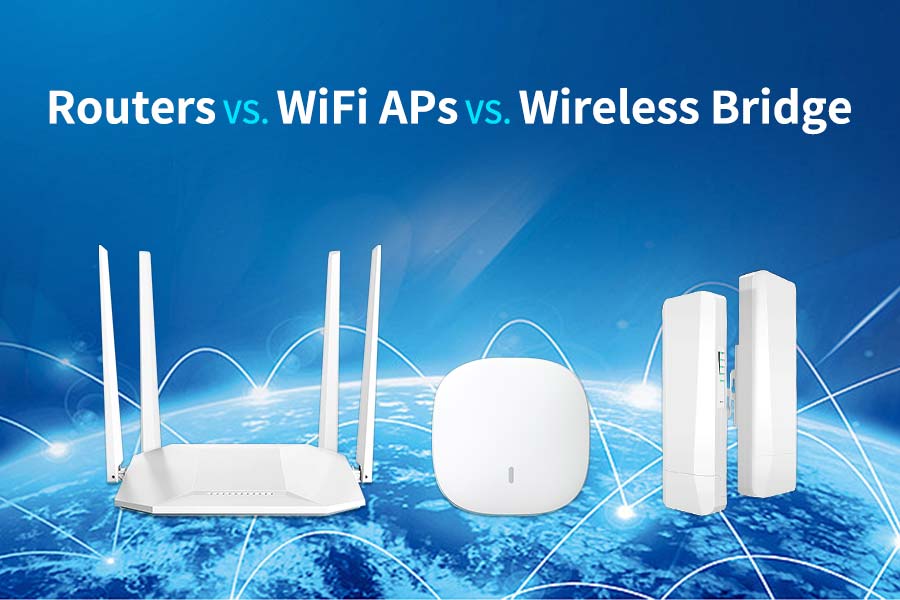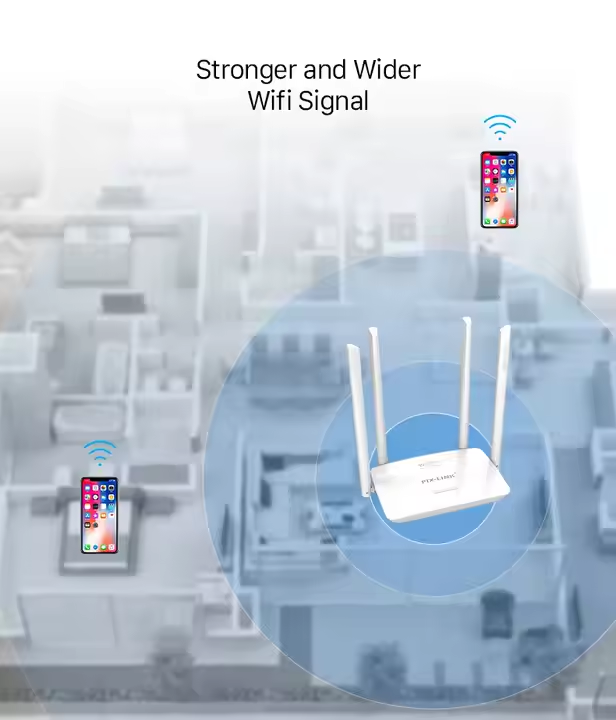Wireless Access Point vs. Wi-Fi Router: Key Differences Explained
In the modern digital age, the need for seamless internet connectivity is more critical than ever. As homes and businesses increasingly rely on wireless technology, understanding the fundamental devices that facilitate this connectivity is essential. Two of the most common devices people encounter are wireless access points (WAPs) and Wi-Fi routers. While both are key players in the world of networking, they serve different purposes and offer distinct functionalities. Grasping these differences can help users make informed decisions about their network setups, whether for a home or office environment.
At first glance, the terms “wireless access point” and “Wi-Fi router” might seem interchangeable, leading to confusion among those new to networking. A wireless access point primarily focuses on extending a wired network, allowing multiple devices to connect wirelessly. In contrast, a Wi-Fi router not only connects devices wirelessly but also routes data between the internet and local devices, thereby facilitating communication among them. This core difference shapes how each device is used and the role it plays in a network.
As we delve into this article, we’ll explore the technical specifications and key features that define both wireless access points and Wi-Fi routers. We’ll discuss their respective roles within a network, highlight specific use cases for each device, and offer advice on choosing the right one for your needs. By clarifying the distinctions between these two essential networking devices, this article aims to equip readers with the knowledge necessary to optimize their internet experience and ensure they have the appropriate equipment for their specific requirements.
Join us as we explore the world of networking devices, shedding light on the differences between wireless access points and Wi-Fi routers. This comprehensive examination will enhance your understanding of how these devices function, making it easier for you to tailor your setup for maximum efficiency and performance. By the end of this article, you’ll be better prepared to navigate the complexities of your home or office network.
A Closer Look at Wireless Access Points
Wireless access points serve as crucial components in creating a wireless network. Their primary role is to connect wireless devices, such as smartphones, tablets, and laptops, to a wired network infrastructure. They expand the network’s reach, allowing users to access internet services from a variety of locations without the constraints of cables. By connecting to a modem or router via an Ethernet cable, an access point provides a bridge between the wired and wireless realms, enabling devices to communicate effectively.
One of the standout features of wireless access points is their ability to support a significant number of simultaneous connections. This capability makes them ideal for environments where many users need reliable internet access, such as offices, schools, and public venues. With advanced technologies like MU-MIMO (Multi-User, Multiple Input, Multiple Output), access points can serve multiple devices at once, improving efficiency and reducing latency. Additionally, many modern access points are equipped with the latest Wi-Fi standards, such as Wi-Fi 6, which further enhances data throughput and overall performance.
When implementing wireless access points, network administrators can strategically position them to optimize coverage and eliminate dead zones. These devices can be configured to create seamless roaming experiences, allowing users to maintain a stable connection as they move throughout a building. Many businesses rely on access points for their scalability; they can be added or removed without extensive reconfiguration of the main network. This flexibility is essential for growing organizations that need to adapt to changing demands without significant overhead costs.
Understanding Wi-Fi Routers
Wi-Fi routers are multifunctional devices that play a central role in home and office networking. Unlike access points, which primarily expand wireless connectivity, routers provide comprehensive networking capabilities. A Wi-Fi router connects to the modem, allowing devices to communicate with the internet. It assigns IP addresses, manages traffic on the network, and offers features like firewall protection and network security protocols. Because of these functions, Wi-Fi routers are often the first point of connection for internet users.
Most people are familiar with the basic features of Wi-Fi routers, which include the ability to connect various devices wirelessly and create home networks. The router accomplishes this by managing both local network traffic and internet traffic, allowing seamless communication between devices. In essence, a Wi-Fi router combines the functionalities of a switch, a router, and a wireless access point, making it a versatile addition to any network setup. Many modern routers also support dual-band functionality, meaning they can operate on both the 2.4 GHz and 5 GHz networks, helping reduce congestion and improve performance.
As network demands grow, many consumers are turning to advanced models that offer additional features such as quality of service (QoS) settings, content filtering, and built-in VPN support. These capabilities enhance the user experience by allowing priority control of data for specific applications and ensuring safe browsing for all users. Mobile app integration has also made it easier for consumers to manage their router settings, providing remote access and real-time monitoring. This convenience is particularly appealing for households with multiple devices that require stable and fast internet connections.
Comparing Key Features: Access Points vs. Routers
When comparing wireless access points and Wi-Fi routers, there are several key distinctions to consider. First and foremost, while both devices provide wireless connectivity, they perform different functions within a network. A Wi-Fi router is responsible for directing traffic between the internet and connected devices, while a wireless access point functions as an extension of the network, enabling more devices to connect wirelessly. Understanding this core difference is crucial for determining which device is most suitable for a specific networking scenario.
Another significant distinction lies in the number of devices supported. Wi-Fi routers typically have a limited capacity for simultaneous connections, as they manage both local and internet traffic. In larger environments such as office buildings or schools, this limitation can lead to decreased performance and slower speeds. In contrast, wireless access points are designed to handle a higher number of simultaneous connections without compromising performance, making them a preferred choice for environments with heavy wireless traffic.
Furthermore, while Wi-Fi routers often come with built-in features such as firewalls and security settings, wireless access points focus on extending coverage and enhancing connectivity. This means that in many cases, organizations might deploy access points in tandem with existing routers to create a more comprehensive network solution. By combining both devices, users can enjoy the benefits of a robust and expansive network while still ensuring effective management of traffic and security.
Choosing the Right Device for Your Needs
When considering whether to use a wireless access point or a Wi-Fi router, several factors should influence your decision. The first consideration is the size and scale of your network. For small homes or offices with minimal devices, a Wi-Fi router may be sufficient to meet connectivity needs. However, as the number of devices increases, or as your network begins to span larger areas, implementing additional access points can enhance coverage and performance significantly. In these cases, a combination of both a router and several access points may provide the optimal solution.
Another crucial factor is the type of applications being used on the network. For instance, if the network supports bandwidth-intensive applications, such as online gaming or video streaming, prioritizing higher performance through access points can prevent lag and enhance user experience. Additionally, understanding the security requirements of your network will play a vital role in your decision-making. Wi-Fi routers provide built-in security features that are essential for protecting personal information and network integrity. However, deploying additional wireless access points allows for more refined control over network security and access management.
Ultimately, budget considerations will also impact your choice. Wi-Fi routers come in various price ranges, from basic models to high-end, feature-rich systems. Wireless access points, while typically seen as a more advanced solution, also vary in cost depending on their capabilities. Organizations and individuals alike should assess their specific needs, evaluate their plans for future expansion, and determine how much they’re willing to invest in networking equipment. Careful planning and research will ensure you select the right combination of devices that will serve you well for years to come.
Conclusion
In conclusion, the debate between wireless access points and Wi-Fi routers is a vital topic for anyone looking to enhance their networking capabilities. Both devices play crucial roles in providing internet access, but their functions and features differ significantly. Understanding the key differences between wireless access points and Wi-Fi routers is essential for making informed decisions tailored to your specific networking needs, whether for personal use or within a larger organizational context.
Through our exploration, we’ve outlined that wireless access points extend coverage and support numerous devices, making them ideal for environments with high wireless traffic. In contrast, Wi-Fi routers serve as the primary hub for managing internet connections while offering additional features such as traffic routing and security management. Each device presents its unique advantages, which can complement each other when deployed strategically. By combining these technologies, users can create a comprehensive network that accommodates a growing number of devices and supports a diverse range of applications.
As networking demands continue to evolve, having a solid understanding of these devices will empower users to make informed choices that enhance their connectivity experience. Whether you’re setting up a simple home network or managing a complex enterprise solution, knowing when to use a Wi-Fi router, a wireless access point, or both will influence your network performance significantly. The ultimate goal should always be to optimize internet access and ensure that users experience reliable, secure, and fast connectivity. In our increasingly connected world, investing in the right networking devices offers a worthwhile return, making the difference between an adequate and an exceptional online experience.




